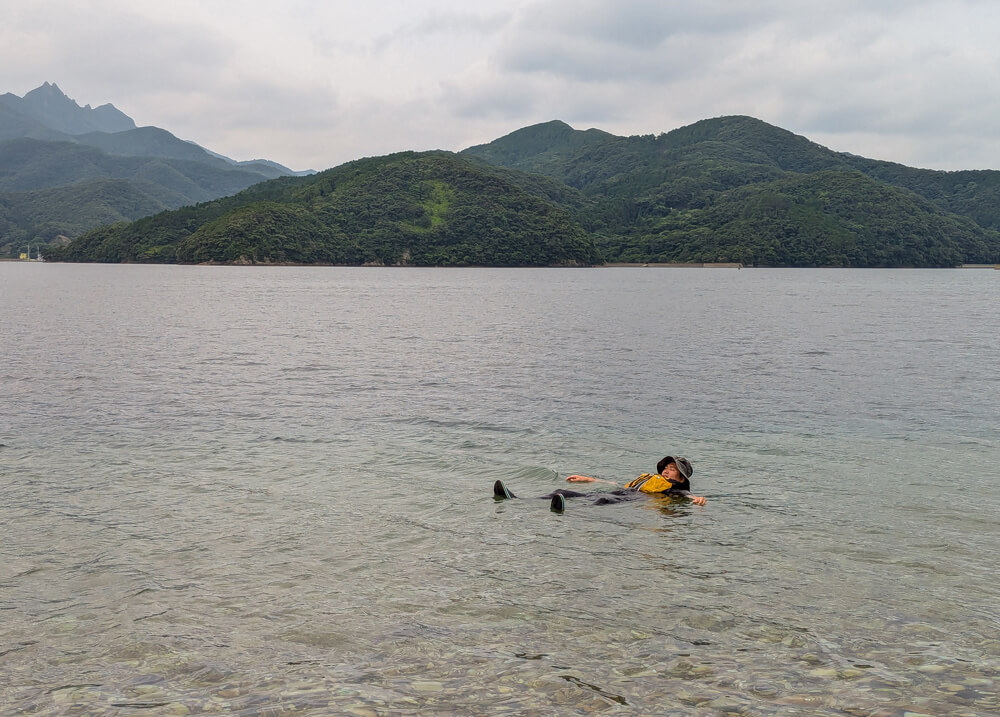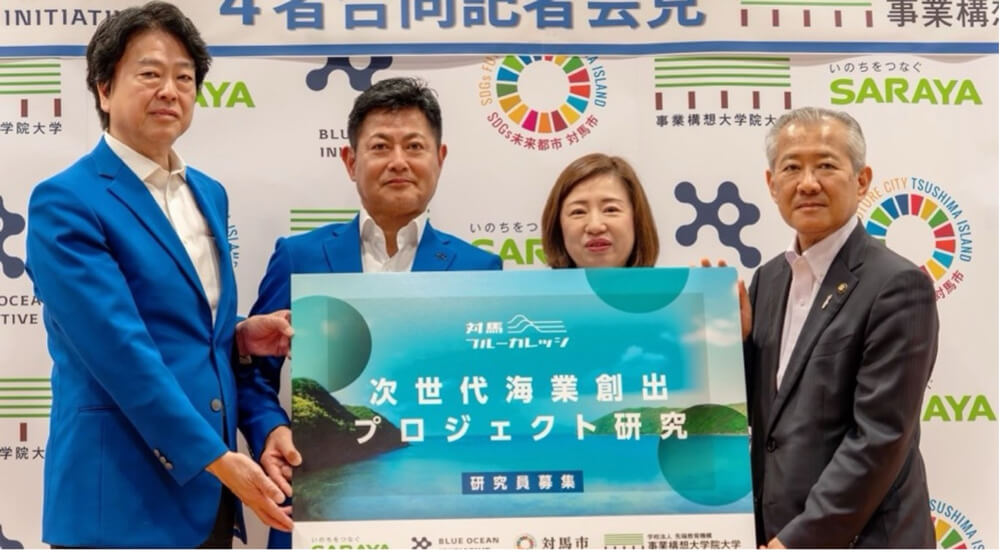Combating Marine Plastic Pollution in Tsushima: A Collaborative Approach

Marine plastic pollution has emerged as a critical environmental challenge, threatening marine life, ecosystems, and human health across the globe. This pervasive issue, characterized by the accumulation of plastic debris in our oceans, demands immediate and concerted efforts to mitigate its impacts. On July 11th, we attended the U.S.-Japan-ROK Marine Environment Symposium 2024 in Fukuoka, followed by a two-day field study tour on Tsushima Island. This experience provided firsthand insights into the severity of the problem and the innovative solutions being employed to address it.
The Situation in Tsushima
Tsushima Island, nestled between Japan and South Korea, serves as a poignant example of the marine plastic crisis.
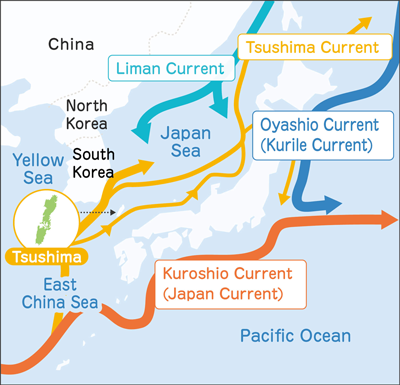 The island is located in the path of the Tsushima Current, a branch of the Kuroshio Current—a north-flowing, warm ocean current on the west side of the North Pacific Ocean basin. This means that everything caught in the Kuroshio Current, and later the Tsushima Current, has a high chance of ending up on the beaches of Tsushima. These beaches, celebrated for their beauty, now face a growing threat from marine pollution. During our field study tour, it became evident that the island is grappling with a significant accumulation of trash, including plastic debris. This debris ranges from large items like fishing nets and plastic bottles to microplastics that permeate the sand.
The island is located in the path of the Tsushima Current, a branch of the Kuroshio Current—a north-flowing, warm ocean current on the west side of the North Pacific Ocean basin. This means that everything caught in the Kuroshio Current, and later the Tsushima Current, has a high chance of ending up on the beaches of Tsushima. These beaches, celebrated for their beauty, now face a growing threat from marine pollution. During our field study tour, it became evident that the island is grappling with a significant accumulation of trash, including plastic debris. This debris ranges from large items like fishing nets and plastic bottles to microplastics that permeate the sand.
According to the FY2023 (R5) Tsushima City Coastal Drift Debris Survey Report, released by the Tsushima Marine Litter Information Center, the estimated annual drifting trash volume from late January 2023 to mid-January 2024 was approximately 37,000 cubic meters. To put this into perspective, 37,000 cubic meters is equivalent to filling 15 Olympic swimming pools or 1,121 shipping containers. This is a staggering amount of litter in just one year, much of which becomes buried over time due to rain and land shifts, making the cleaning process increasingly difficult.
How can we, as global citizens connected to the sea and indirectly to Tsushima, help prevent this grave situation? Among the many possible approaches and measures already taken, this article will highlight the results of the recent Marine Environment Symposium and what we learned during our nature field study tour on Tsushima. Although many of its once-pristine beaches are now marred by an influx of marine debris, the symposium and tour offered a platform to explore the current state of marine pollution in Tsushima, the collaborative efforts being undertaken, and the role of organizations like SARAYA in spearheading initiatives to combat this global pollution issue.
U.S.-Japan-ROK Marine Environment Symposium 2024
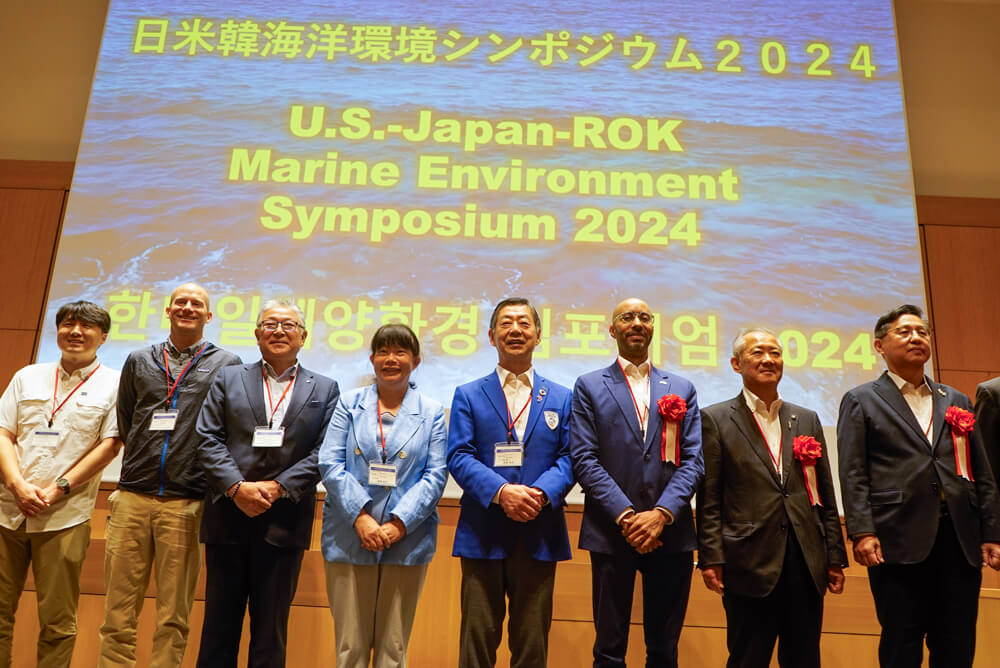 Some of the speakers posing at the end of the Symposium, including President Saraya (middle, deep blue jacket).
Some of the speakers posing at the end of the Symposium, including President Saraya (middle, deep blue jacket).
On July 11th, 2024, the U.S.-Japan-ROK Marine Environment Symposium was held in Fukuoka, Japan. The event aimed to address the global problem of marine plastic pollution by bringing together the latest knowledge and technology from the three countries (U.S., Japan, and South Korea) based on the points confirmed at the USA-Japan-ROK Summit held at Camp David in 2023. Using the current situation and efforts in Tsushima City as a model, which has the most drifted waste of any shore in Japan, the project explores sustainable solutions and disseminates information useful for any region of the world.
The Symposium began with presentations by several dignitaries, including Naoki Hitakatsu, the Mayor of Tsushima; Park Geon Chan, Consul General of the Republic of Korea in Fukuoka; Chuka Asike, U.S. Consul in Fukuoka; and Motome Takisawa, Vice Minister of the Environment of Japan. During their brief presentations, the recurring message was clear: human prosperity depends on healthy oceans. These three countries are connected by the seas in many aspects, making collaboration vital to understanding this problem and achieving plastic waste reduction through international efforts. We need a sustainable, green ecosystem to achieve zero sea plastic waste, and that requires collective teamwork. No single country can solve this alone.
The goal is to reduce the use of single-use plastics, produce what we need without damaging our ecosystems, and understand how much we use. Essentially, reuse, reduce, and recycle.
After the introductions, the event was divided into two sessions. The first session, themed “Current Status of Marine Litter on Tsushima Island and Actions,” included panelists from Kyushu University, the Korea Maritime and Fisheries Institute, and members from Patagonia Japan, and Korea. The second session, themed “Marine Plastics and Circular Economy,” included panelists from the Pohang Institute of Industrial Science, the Environment, Science, Technology, and Health Section of the East and Southeast Asia Hub, U.S., and SARAYA.
Session 1: Current status of marine litter on Tsushima island and actionsPanelists:
Moderator:
|
Session 2: Marine plastics and circular economyPanelists:
Moderator:
|
The panelists, like their dignitary counterparts, shared the same sentiments and ideas: Tsushima is unfortunately a hotspot for marine trash due to its location, and its habitat is degrading due to the invasion and accumulation of plastics and other debris, which fragment even become powder over time. Plastic pollution requires international efforts, but small first steps can lead to broader actions. International regulation standards are necessary, hence the need for cooperation and enhancing awareness. However, companies, NPOs, organizations, and private individuals are also vital, as ideas and action can come from anywhere. Even getting into the habit of picking up our own waste is a significant step in fighting pollution.
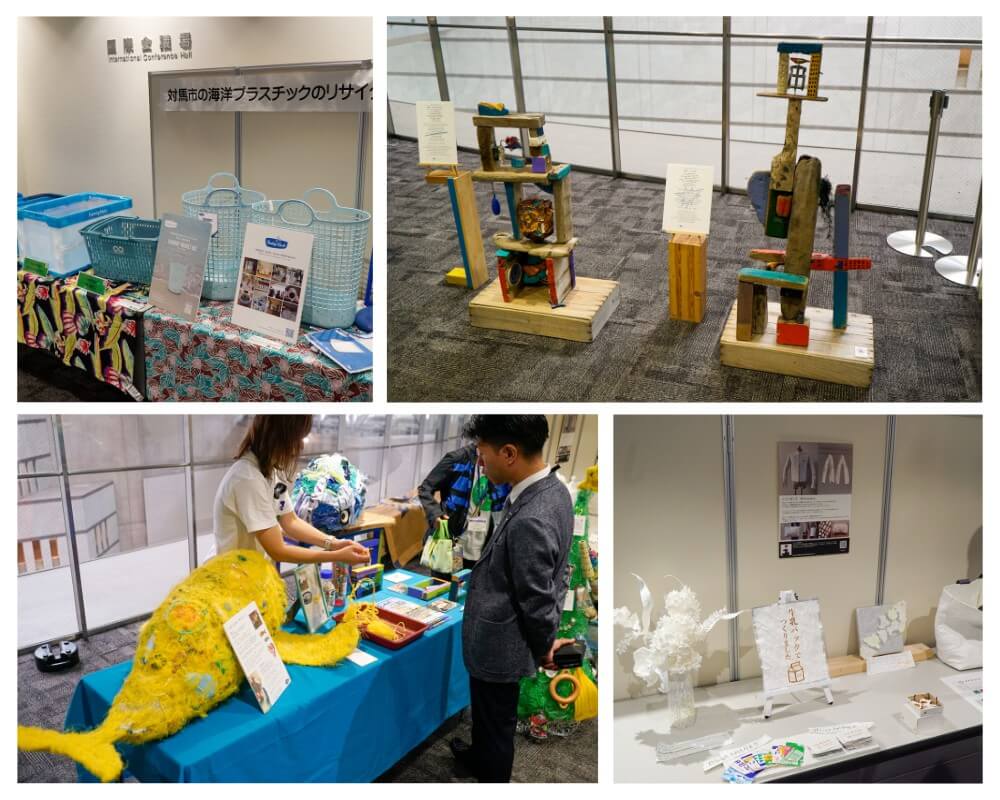 During the Symposium, art and products were displayed as examples of how plastic and other sea debris could be reused and recycled.
During the Symposium, art and products were displayed as examples of how plastic and other sea debris could be reused and recycled.
To end the event (and before the closing remarks by Hiroshige Horie, Managing Director of the Kyushu Economic Federation, who mentioned the need to step up their efforts to match other participants) Masaomi Abiru, Section Chief of the Environmental Policy Section of Tsushima City, read a joint message from the participant countries in this symposium. In it, they pledged that, together with local governments, companies, and organizations involved in collecting and recycling trash in the marine environment, they will promote the protection of the marine environment and sustainable initiatives through the creation of existing and new forums for discussion. They also recognized the importance of sharing information and creating a recycling society at an international level, acknowledged plastic pollution as a serious problem that requires a sustainable recycling society, and emphasized the need for cooperation and sustainable solutions to protect the environment for future generations.
Video of the event is available here (Japanese)
Tsushima Environmental Study Tour
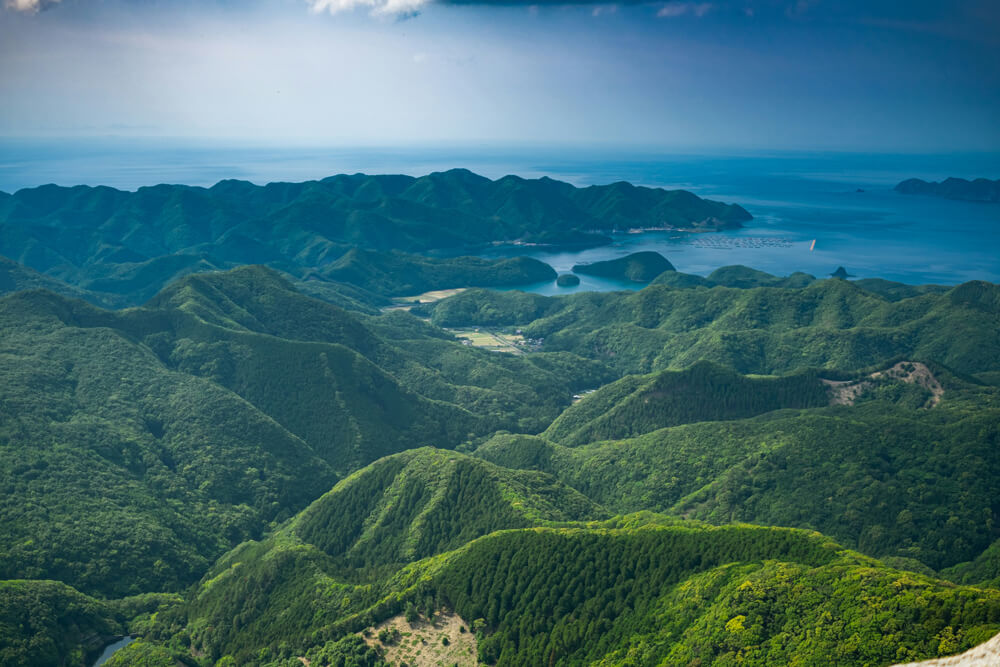 Tsushima, Nagasaki, Japan. Photo by Nichika Yoshida.
Tsushima, Nagasaki, Japan. Photo by Nichika Yoshida.
The two days following the Symposium were spent on a short yet very eye-opening study tour to observe the current situation in Tsushima. On the first day, after landing at Tsushima Airport, we attended a lecture by our guides for the tour, Tsushima CAPPA (Coast and Aquatic Preservation Program Association). This volunteer organization acts as a "civilian glue" by holding beach cleanup events, conducting public awareness activities related to marine litter, including drifting garbage, and serving as an "intermediate support organization" that coordinates and shares information between the Tsushima City government, citizens, private organizations, and marine litter stakeholders.
In addition to their interim support organization work, one of Tsushima CAPPA's projects is environmental study work. Through this initiative, they aim to establish rules on the island regarding marine leisure in cooperation with fishermen and others and to conserve and improve the value of the sea and coastal environment as a tourism resource.
During their presentation, we learned that trash from many countries in Asia, especially China, Korea, and Japan, ends up on the beaches of Tsushima. The problem the CAPPA members faced was that although they could clean a beach with many volunteers, trash would continue to wash ashore over time, making their efforts seem futile. Additionally, while it is easy to access the main beaches and have trucks and cars help with loading trash, smaller beaches with no roads or paths make cleaning efforts almost impossible.
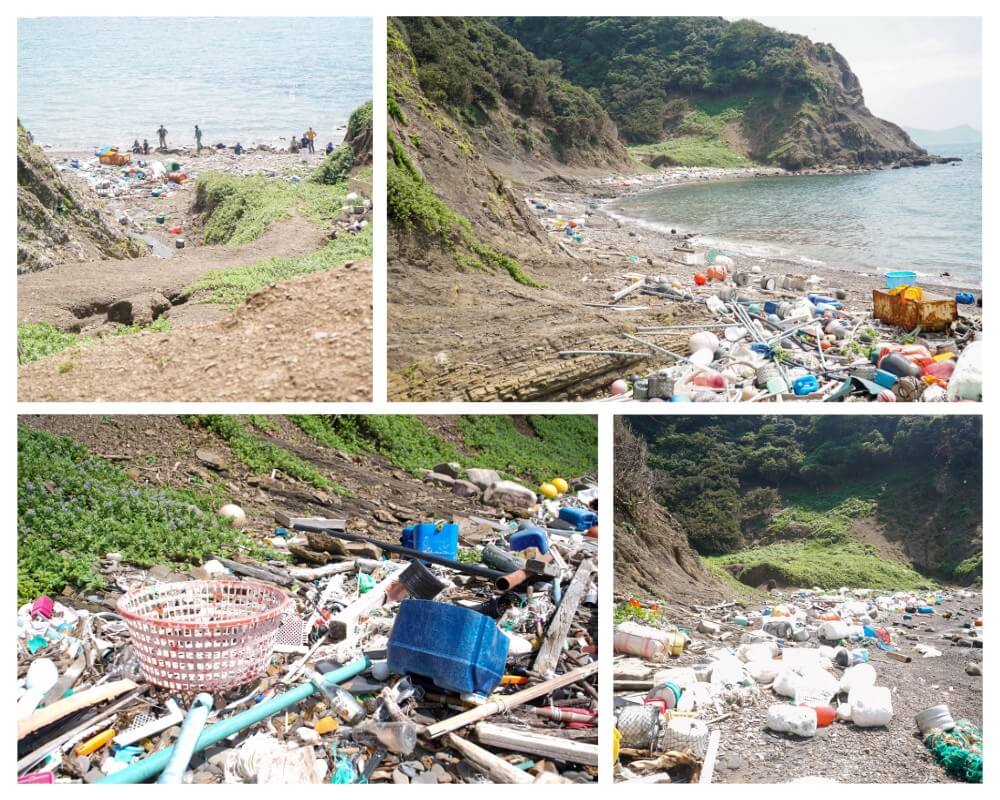 Photos of marine pollution that washed into the beach found during our visit.
Photos of marine pollution that washed into the beach found during our visit.
The problem is not only buoys and nets washing ashore but also cans, straws, bags, forks, razors, and many other objects of different shapes and materials (many plastics) that can injure volunteers or disintegrate over time into small pieces, micro and nano plastic, which end up getting buried under the sand.
How can we fix this?
This is where Tsushima CAPPA realized that volunteers alone are not enough. They decided to create an organization that connects with various companies and stakeholders to find solutions. Companies, people, and governments must all work together towards a common goal. Education, research, information sharing, beach cleanups, and firsthand experiences all play a role in realizing the true beauty of nature.
Nobody is individually to blame for our current situation. We all need to do better. No country or company wants to see their products, which people worked hard to create, end up as trash. We all need to connect and engage to find solutions, regardless of country, uniting our societies against a global problem.
After the presentation, we went to a beach to participate in a cleanup, followed by a visit to the recycling facility to see how plastic is recycled by type and color. We also enjoyed delicious local sushi for our meals.
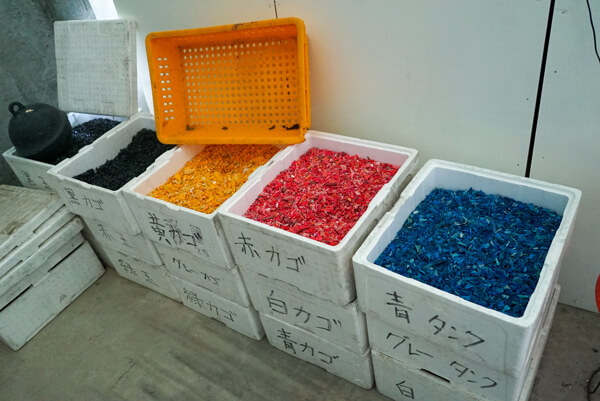 |
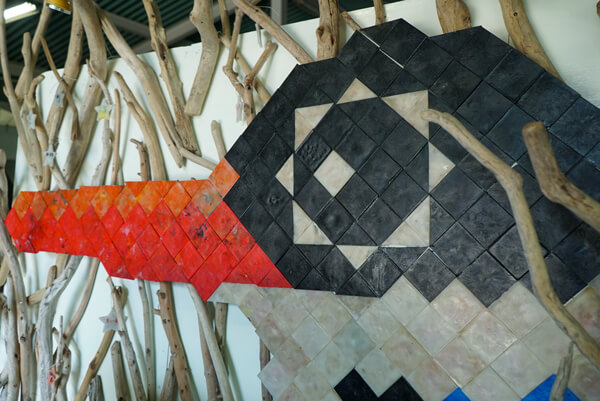 |
Plastics are classified by color and fragmented for easier recycling and reuse in products and art.
The next day, during a kayak tour, we were able to see the beauty of Tsushima but also noticed trash in the most remote areas.
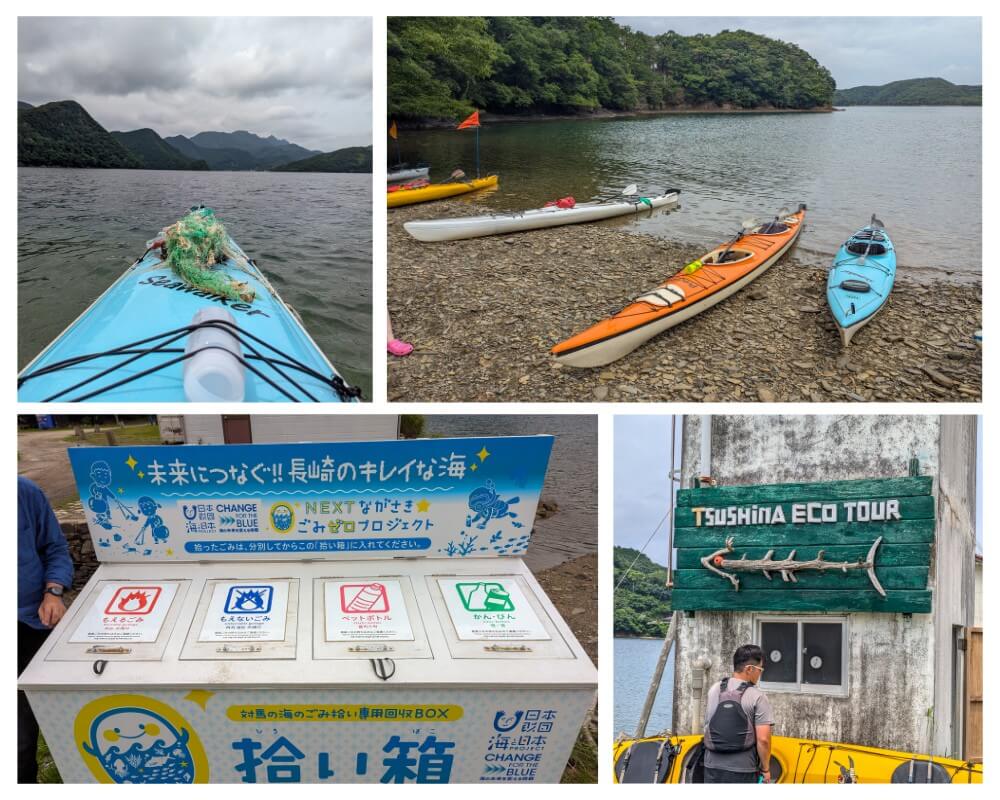 During our kayak tour, we all gathered some trash, for it to be disposed of.
During our kayak tour, we all gathered some trash, for it to be disposed of.
Overall, it was two days of realizing the situation, understanding the problems, and thinking about how we can all help to avoid the bleak “Groundhog Day Syndrome” that cleaning beaches seems to be becoming.
SARAYA's Commitment to Environmental SustainabilitySARAYA, as a member of the Blue Ocean Initiative, has witnessed the struggles of Tsushima and has actively involved itself in the island to be part of the solution. In June 2024, the Blue Ocean Initiative and the Graduate School of Advanced Education Initiative launched the "Tsushima Blue College: Project Research for the Creation of the Next Generation of Marine Industry." This project aims to develop the Tsushima City area and solve marine problems by creating new businesses through public-private co-creation.
Connected with the ocean and plastic reduction, SARAYA is also participating in several "Blue Ocean Projects" towards creating a sustainable future. From our participation in the 2025 Osaka・Kansai Expo to the development of 100% renewable energy boats, you can learn more on our Blue Ocean Projects page. |
A Sustainable Future
The fight against marine plastic pollution is a daunting challenge, but it is one that we must face with determination and unity. The symposium, study tour, and initiatives like the Blue Ocean Projects have shown that while the problem is complex, the solutions lie in collaboration. Governments, private companies, organizations, and individuals all have roles to play.
SARAYA is committed to doing its part by engaging in innovative projects and fostering partnerships aimed at creating a sustainable future. We know that by working together, sharing knowledge, and taking concrete actions, we can make a more significant impact. It is only through collective effort that we can hope to preserve our oceans for future generations and ensure a cleaner, healthier planet for all.
Let's continue to strive for a world where human prosperity and environmental sustainability go hand in hand. Together, we can turn the tide on marine plastic pollution and pave the way for a brighter, more sustainable future.
